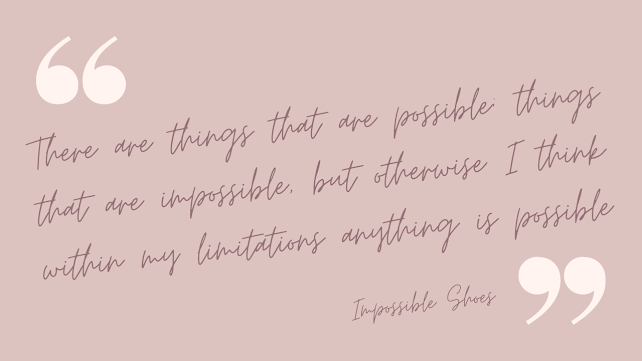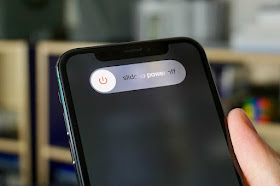Recently I decided that I needed to address mental health more here on my blog. It's something I've shied away from possibly because I've had experiences where my illnesses where not fully understood and where mistaken for being psychosomatic or that I'd over reacted turning a twinged hip into one that has dislocated. (Note: having hypermobile Ehlers-Danlos my joints do dislocate a heck of a lot ore easily, so no I don't have to be in a car crash for my hip to dislocate). In all honesty when healthcare professionals think I'm 'making it all up' it's really upsetting and I don't feel like my very real and very physical illnesses are believed and are poorly understood and at time it's makes me question myself. Having rare illnesses or poorly understood diagnosis's is often really hard. I know the medicalisation of my life and my life with the conditions I have often better than most doctors, especially when you live in a small town. Sometimes talking in medical terms makes professionals think that I've been on WebMD instead of living with chronic health problems and because my illnesses are poorly understood I've often not been given the care I need; this is especially the case in A&E.
What staff can do is listen to me and let me use my expertise by experience and learn that a 28 year old may need help with certain tasks most people my age can do for themselves. Also just ask me what would help me the most like turning the lights off in the room and keeping the noise level to a minimum and ensure I am comfortable and have the tools to communicate to name a few things. Also along with that with the new NICE guidelines I hope that staff will follow the new guidance for the care patients with severe M.E may require as I find out of all my illnesses the hospital environment flares my M.E up the most.
Now, back to mental health. My struggle with my mental health precedes becoming chronically ill and now my depression and anxiety are exacerbated by my chronic health problems and disabilities.
Being chronically ill/disabled is pretty much a full-time job. All the time without a break you are dealing with symptoms, bad days, medication times, appointments, chasing up professionals, sending letters and emails, making phone calls, ordering medication and other medical supplies, endless waiting for so many things - the list goes on. There is so much more to having chronic health problems and disabilities than meets the eye.
For many people as well as their physical health it deeply takes a toll on their mental health unsurprisingly.
Everyone has mental health and it's important that we look after our mental wellbeing as much as we do for our physical wellbeing.
Since becoming ill I've found a gap when it comes to mental wellbeing. When I developed depression and anorexia as a teenager I was able to access psychotherapy and other care. However when I became chronically ill there was and is little emotional support to help me deal with being chronically ill and little of it has come from the NHS and never from mental health services.
I became ill in 2013 and was officially diagnosed in 2017 with FND and M.E - my other diagnosis': hypermobile Ehlers-Danlos Syndrome, PoTS and a few others all collectively being my 'main' conditions followed shortly after when I was referred onto other consultants. Even after then after being given name to my illnesses there wasn't a massive shift in the help I was receiving physically let alone for my mental wellbeing. It wasn't until 2019 when I when into a specialist ward for my FND and the severity of my M.E that I received some sessions wth a health psychologist. In these precious sessions it was the first time I was able to talk about and work on how my health was affecting me.
There is health psychology services, there's even one at our local hospital. The specialist ward I was on tried to refer me as part of my after-care following discharge but the service only accepted those with certain diagnosis' and non of mine where on their list. Plan B was for a psychologist from our local mental health services to see me with support from the hospital's head health psychologist, who from what I was told was interested in 'my case' (gosh I hate that term, I just feel like my oversized hospital file as opposed to a real person with whatever is in said oversized file). That Plan B never came to fruition. It felt like my mental wellbeing wasn't important to them. I also felt that the support was denied from both health psychology and mental health services because I didn't fit into a nice neat tick box - I didn't have the right physical ailment and neither did I have a sufficient enough mental health diagnosis (despite my diagnosis of clinical depression).
However, positively, upon discharge in my after-care plan I was also referred to a Social Prescribing service and they where able to refer me to a counselling service which they had a pot of money for. Reflecting on this this has been the better option.
Counselling isn't for everyone but for me medication alone doesn't work alone. Now I've been seeing a therapist (and there's no shame or weakness in seeing a therapist or indeed taking medication for your mental health) it's really helped. It's helpful to have someone from the outside who's just there to listen, support me and help me see things in a different way (and how it's all confidential too). I can talk about how down I get when I'm stuck in one room, or how out of control I feel or how I get 'sick and tired of being sick and tired' or how I wish I could quite my disabled full-time job and also the ability to grief for a life that's been turned upside down.
I think there's a lot of awareness around how our mental wellbeing can be affected by lots of things - job loss, family breakdowns, bereavement, being a victim (or more-so a survivor) of crime etc. However I don't think that many people attribute chronic illness and disability to poor mental wellbeing and I think more needs to be done about this. For example more health psychology services and them accepting a wider range of illness to be directed to their service. I also think that GP's, consultants, nurse specialists etc need to become more aware of how someone with a chronic illness or disability may as a result of their health may be struggling with their mental wellbeing. I know within the new NICE guidelines for M.E that CBT - Cognitive Behavioural Therapy - is now recommended as a support tool but the problem with that is that for some, like myself, CBT isn't the right sort of therapy for everyone and other types of therapy may be more effective.
I'm so grateful to have access to therapy as I know for some it isn't something they are able to access. I think mental health and wellbeing within chronic illness and disability also needs to be talked about more and considered.
Lastly I just want to say to those who are chronically ill or disabled that it's okay to not feel okay; we're allowed to be upset, depressed, bereaved, angry, frustrated, fed up and every other emotion named and un-named. Also don't feel afraid to talk about how you are feeling emotionally - your mental wellbeing is just as important as your physical wellbeing; speak with your GP or your consultant or your social worker as they may be able to help. Also talk to family or friends or even a helpline. As good as it is to talk to my therapist I find it good to talk to my friends who also have chronic health problems as they 'get it'.
Also importantly and I can speak from personal experience on this point is to live outside the bubble of your health problems. My friend once shared this quote "your life is like a piece of cake and you have ten portions, but only one portion is your health". It is so important for your mental wellbeing to yes deal with your health problems but to not have them as the central sole of your life and existence. When I realised this and started to focus on all ten portions of who I am it massively has helped my mental wellbeing.































